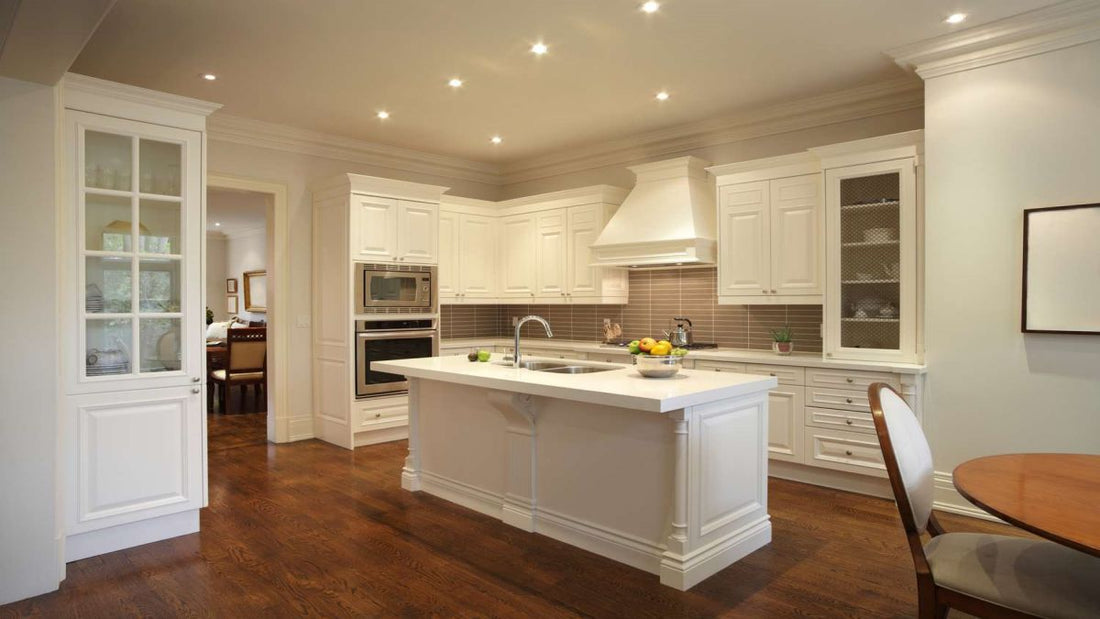The kitchen, often referred to as the heart of the home, demands not just practical lighting but also fixtures that enhance its functionality and aesthetics. Choosing the right kitchen lamps involves a careful balance between illumination, style, and functionality, creating a harmonious and inviting space where culinary magic unfolds and cherished memories are made.
Understanding Kitchen Lighting Needs
1.Task Lighting for Efficiency
Task lighting in the kitchen serves a functional purpose, illuminating work areas where meal preparation, cooking, and cleaning occur. Under-cabinet lights, pendant fixtures above the island or sink, and recessed lighting provide focused illumination for various tasks, ensuring efficiency and safety in the kitchen.
2.Ambient Lighting for Warmth
Ambient lighting sets the overall mood and ambiance in the kitchen. Ceiling fixtures, chandeliers, or track lighting offer general illumination, creating a welcoming and inviting atmosphere. They complement other lighting sources while providing a well-lit environment for everyday activities.
3.Accent Lighting for Style
Accent lighting adds flair and character to the kitchen, highlighting architectural features, artwork, or decorative elements. LED strips, wall sconces, or strategically placed lamps can enhance visual interest, elevating the aesthetics and style quotient of the space.
 Choosing the Perfect Kitchen Lamps
Choosing the Perfect Kitchen Lamps
1.Match Lighting to Kitchen Design
Select kitchen lamps that complement the design scheme. For modern kitchens, sleek and minimalist fixtures might suit best, while traditional kitchens might benefit from classic or ornate styles. Ensure the lamps harmonize with existing decor elements.
2.Consider Lighting Intensity and Color
Evaluate the intensity and color temperature of the lighting. Brighter, cooler lights are suitable for task areas, while warmer tones create a cozy ambiance in dining or seating areas. LED bulbs offer energy efficiency and flexibility in color temperatures.

Take into account the size and scale of the fixtures concerning the kitchen space. A large fixture might overwhelm a smaller kitchen, while multiple smaller fixtures or recessed lights can evenly distribute light in a larger area without overcrowding.
4.Functionality and Adjustability
Opt for fixtures that offer adjustability or dimming options. Adjustable pendant lights or track lighting allow you to direct light as needed, while dimmable options provide flexibility in setting the desired ambiance for different occasions.

1.Pendant Lights: Versatile and Stylish
Pendant lights are versatile and stylish options for kitchen islands or dining areas. They come in various styles, sizes, and materials, adding a decorative element while providing focused task lighting.
2.Under-Cabinet Lighting: Practical and Functional
Under-cabinet lights illuminate countertops, making meal preparation more efficient. LED strips or puck lights discreetly installed beneath cabinets offer directed task lighting without compromising aesthetics.

3.Recessed Lighting: Sleek and Subtle
Recessed lights offer a sleek and subtle lighting solution, ideal for overall illumination. They blend seamlessly into the ceiling, providing a clean and unobtrusive lighting source for the entire kitchen.
4.Chandeliers or Ceiling Fixtures: All-encompassing Illumination
Chandeliers or ceiling fixtures serve as statement pieces, offering ambient lighting and adding a touch of sophistication. They work well in dining areas or larger kitchens, providing overall illumination and style. Maintenance and Care
Maintenance and Care
1.Regular Cleaning
Maintain the cleanliness of kitchen lamps by regularly dusting or wiping them down to prevent the buildup of grease and grime, which can affect both appearance and light output.
2.Bulb Replacement
Keep track of bulb life and replace them promptly when they dim or fail. Regularly changing bulbs ensures consistent lighting and avoids sudden darkness during kitchen activities.
3.Professional Inspection
Consider occasional professional inspection to ensure electrical safety and fixture functionality, especially for complex or hard-to-reach installations. In the tapestry of kitchen design, lighting serves as a vital thread, weaving functionality, style, and ambiance into a cohesive and inviting space. Choosing the right kitchen lamps involves a thoughtful consideration of design aesthetics, lighting needs, and maintenance, creating an illuminated haven where culinary delights are prepared and shared, fostering warmth, and creating cherished memories.
In the tapestry of kitchen design, lighting serves as a vital thread, weaving functionality, style, and ambiance into a cohesive and inviting space. Choosing the right kitchen lamps involves a thoughtful consideration of design aesthetics, lighting needs, and maintenance, creating an illuminated haven where culinary delights are prepared and shared, fostering warmth, and creating cherished memories.


